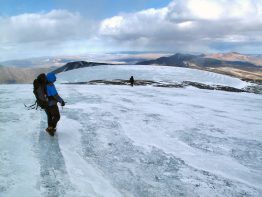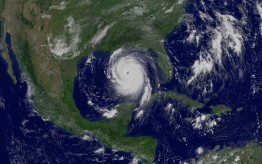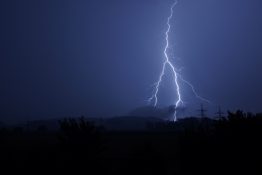The simple story says that during the last ice age, temperatures were colder and ice sheets expanded around the planet. That may hold true for most of Europe and North America, but new research from scientists in the Department of Earth and Space Sciences at the UW tells a different story in the high-altitude, desert climates of Mongolia. The recent paper in Quaternary Science Reviews is the first to date ancient glaciers in the high mountains of Mongolia’s Gobi Desert.
Read more at UW Today »Ice core shows North American ice sheet’s retreat affected Antarctic weather
Researchers at the University of Washington were among the co-authors of a new study that uses ice core data to see how Earth’s climate behaved at the end of the last ice age, when the Laurentide Ice Sheet covering much of North America retreated about 16,000 years ago. The study led by the University of Colorado Boulder is published online this week and will be in the Feb.
Read more at UW Today »UW atmospheric scientists flying through clouds above Antarctica’s Southern Ocean
University of Washington scientists are part of an international team that is spending six weeks in the remote Southern Ocean to tackle one of the region’s many mysteries: its clouds. What they discover will be used to improve climate models, which routinely underestimate how much solar energy bounces off clouds in that region. Simulating how much solar energy is absorbed or reflected on Earth is key to calculating the future of the planet under climate change.
Read more at UW Today »Q&A: UW’s Shuyi Chen on hurricane science, forecasting and the 2017 hurricane season
The United States just suffered the most intense hurricane season in more than a decade, and possibly the costliest ever. Hurricane Harvey hit Houston in mid-August. Hurricane Irma struck Florida in early September, followed just two weeks later by Hurricane Maria in Puerto Rico and the Caribbean. Now, with the close of hurricane season on Nov. 30, new UW faculty member Shuyi Chen, professor in the UW’s Department of Atmospheric Sciences and an expert on hurricanes, answered a few questions about the state of hurricane forecasting and the 2017 storm season.
Read the Q&A at UW Today »How lightning strikes can improve storm forecasts
Humans have always been frightened and fascinated by lightning. This month, NASA is scheduled to launch a new satellite that will provide the first nonstop, high-tech eye on lightning over the North American section of the planet. University of Washington researchers have been tracking global lightning from the ground for more than a decade. Lightning is not only about public safety — lightning strike data have recently been introduced into weather prediction, and a new UW study shows ways to apply them in storm forecasts.
Read more at UW Today »





